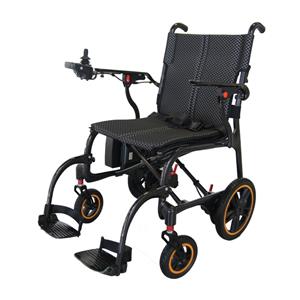Compact Comfort: The Future of Folding Electric Hospital Beds
In the realm of healthcare, the hospital bed has been a silent yet significant witness to the evolution of medical care. From the rudimentary wooden frames to the modern marvels of engineering, the journey of the hospital bed reflects our growing understanding of patient comfort and clinical needs. The advent of electric hospital beds marked a pivotal shift, offering adjustable features that cater to the diverse requirements of patient care. Today, we stand on the cusp of a new era with the innovation of folding electric hospital beds, which not only provide comfort but also promise a solution to the ever-present challenge of space optimization in healthcare facilities.
The Innovation of Folding Mechanisms
Folding medical beds are a testament to the ingenuity of modern design, marrying form with function in a way that is both practical and innovative. The technology behind these folding mechanisms is a symphony of precision engineering, allowing the bed to transform from a fully functional hospital bed to a compact, space-saving unit. The benefits of foldable designs are manifold, offering a seamless blend of adjustability and portability. Safety features such as lock mechanisms and slow-release hinges ensure that the folding process is as smooth as it is secure, providing peace of mind to both patients and healthcare providers.

Space Optimization in Hospitals
The challenges of limited space in hospitals are as old as the institutions themselves. In an environment where every square foot is precious, folding beds for patients offer a revolutionary approach to space management. By reducing the footprint of hospital beds when not in use, these innovative designs allow for more efficient use of hospital rooms, freeing up valuable real estate for other critical functions. Case studies from leading hospitals around the world have shown that the implementation of folding electric hospital beds can lead to a significant reduction in the overall space required for patient care, without compromising on the quality of services provided.
The Role of Electric Features
The electric bed for patients is more than just a convenience; it is a cornerstone of modern patient care. These beds offer a range of adjustable features that can be controlled with the touch of a button, ensuring that patients can find the most comfortable and therapeutic position for their needs. Remote control and automation are not just about luxury; they are about enhancing the autonomy and dignity of patients, allowing them to maintain a sense of control over their environment. Moreover, the energy efficiency of these electric hospital beds is a testament to the commitment to sustainability in healthcare, ensuring that comfort and care can be provided without a heavy environmental footprint.

User Experience and Patient Care
The ultimate measure of any medical innovation is its impact on the user experience. Folding electric hospital beds have been designed with the patient's comfort and satisfaction at the forefront. By providing adjustable features that cater to individual needs, these beds contribute to a more restful and therapeutic environment for patients. For those in the process of rehabilitation, the ability to adjust the bed's position can be a crucial aid in regaining mobility and independence. The perspectives of nursing staff are equally important, as they often witness firsthand the benefits of these beds in terms of ease of use and the positive impact on patient care.
The Impact on Hospital Logistics
The logistics of hospital operations are complex, with the management of equipment being a significant component. Folding electric hospital beds streamline the process of storage and transportation, reducing the physical strain on staff and the risk of damage to equipment. By minimizing the footprint of hospital beds, these innovative designs also contribute to a more organized and efficient hospital environment, which can lead to cost savings and improved operational efficiency.
Design and Aesthetics
In the world of healthcare, design and aesthetics are not just about appearances; they are about creating an environment that promotes healing and well-being. Ergonomic design is crucial in the development of folding electric hospital beds, ensuring that they not only look good but also provide the necessary support and functionality for patient care. Aesthetics play a vital role in creating a pleasant and calming hospital environment, which can have a positive impact on patient recovery. Customization options for these beds allow hospitals to tailor their equipment to match the decor and ethos of their facilities, creating a cohesive and professional image.
The Future of Hospital Bed Technology
The future of hospital bed technology is bright, with emerging trends pointing towards greater integration with smart hospital systems. The potential for these folding electric hospital beds to communicate with other devices and systems within the hospital environment opens up new possibilities for patient monitoring and care. As we anticipate future needs and developments, the focus remains on enhancing patient comfort, improving operational efficiency, and ensuring that these beds remain at the forefront of healthcare innovation.
Challenges and Considerations
While the benefits of folding electric hospital beds are clear, there are challenges that must be addressed. Manufacturing and maintenance concerns are paramount, as these beds must meet the highest standards of durability and reliability. Regulatory compliance and adherence to safety standards are non-negotiable, ensuring that these beds provide not only comfort but also the highest level of safety. Balancing the cost of these advanced features with the need for affordability is a critical consideration, as hospitals seek to provide the best possible care within budget constraints.
The Path Forward
The significance of folding electric hospital beds in modern healthcare cannot be overstated. They represent a convergence of comfort, functionality, and space efficiency that is set to redefine patient care. As we look to the future, the potential for global adoption of these beds is vast, promising a new standard in hospital equipment design. The path forward is one of innovation and improvement, with the ultimate goal of enhancing the patient experience and the delivery of healthcare services.





